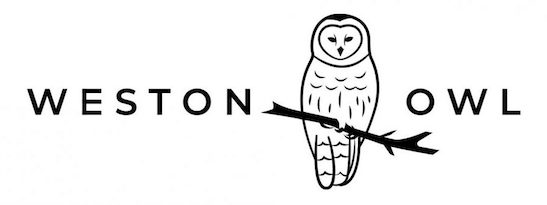Did You Know? No Disturb Zones and Tree Removal Policy

Many folks new to Weston, and even some long-time residents, don’t realize that Weston does have a wetlands protection and tree removal policy. As a well-known tree-lover in town, the Owl receives a photo a week from people who are horrified by the clear-cutting of trees on private property. While most developers in town do know the law about this, it is more often private landowners who run afoul of the Massachusetts Wetlands Protection Act, which Weston follows.
While proponents of “it’s my land, I’ll do what I want” may not like it, there is a policy in town and there is a reason for it. There is a great ecological value to natural wooded areas close to wetlands, streams and waterways–and while it may be one property owner’s land, it does affect whole neighborhoods in town. Think of Hobbs Brook, Cherry Brook and Stony Brook which all wend their way through town. Nonesuch Brook passes through the high school and middle school campuses, under the Mass Pike, and onwards to Nonesuch Pond at Rivers School. What happens upstream affects downstream, and for that reason, we have a Conservation Commission approval process. Even the fifth-grade trees pictured above had to be approved for planting in the No Disturb Zone.

In order to protect water supplies and wildlife habitat, to prevent pollution and storm damage, and to provide flood control, the policy of the Weston Conservation Commission is that no work may be done within a 25-foot No-Disturb Zone (NDZ). The NDZ is the area within 25 feet of the edge of a resource area subject to protection under the Massachusetts Wetlands Protection Act, G.L. c. 131, § 40.
Why is the NDZ so important? Activities within 25 feet of the edge of a resource area have a high likelihood of adverse impact upon the protected resource area. Because of this, landowners must obtain prior permission from the Commission before work of any kind (e.g., tree or brush removal or trimming, vegetation removal or cutting, lawn expansion, soil grading, and construction) is conducted in the NDZ. Removal of trees within the NDZ is addressed in the Commission’s Tree Removal Policy.
Tree Removal Policy
Property owners often approach the Conservation Commission for approval to remove trees in a Wetland Resource Area or Buffer Zones on their lot because they either pose a safety threat, or interfere substantially with the landowner’s use of their property. Each situation is evaluated by the Conservation staff and Commission and mitigation is often recommended.
From the town website:
Landowners must obtain prior permission from the Commission before work of any kind (e.g., tree or brush removal or trimming, vegetation removal or cutting, lawn expansion, soil grading, and construction) is conducted in the following areas, over which the Commission has jurisdiction:
- Wetland Resource Areas, defined as 100-year flood zones, wetlands, streams, ponds, and marshes
- Riverfront Areas (land within 200 feet of a perennial stream)
- Buffer Zones – Land within 100 feet of a Wetland Resource Area. A strict standard of review applies to the area within 25-feet of a Wetland Resource Area (the No Disturb Zone, or NDZ).
Wetland Resource Areas and Riverfront Areas may sometimes appear to be dry and thus difficult to identify, so all landowners are encouraged to contact the Conservation Office at 781-786-5068 to discuss any proposed work.
Please note that work of any kind (e.g. vegetation removal or cutting, lawn expansion, soil grading, and construction) in a Jurisdictional Area must also be permitted. Please contact the Conservation Office prior to engaging in this activity on your property.
+++
While many of us hate to see the number of trees coming down on individual lots, if the property owner or developer has followed Conservation policy, there is not much you can do. Yet. The Owl fervently hopes that Weston can find its way to a Tree By-Law–along with an education program that lets our residents and developers know the value of old trees and their underground network of support. When a tree stands alone, it is at risk (See the Owl’s post on the value of oaks) and young trees are not yet on the wood-wide web (yeah, had to happen). While mitigation with new trees is often recommended, it is not going to be the ecological value of letting the old trees be.
We are all just caretakers of the land for the next generation. What will your legacy be?

